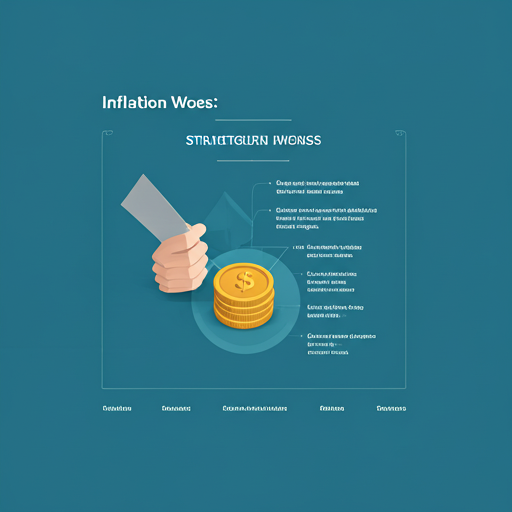Introduction to Cryptocurrency Surge
Understanding Cryptocurrency
Cryptocurrency has emerged as a revolutionary financial asset, capturing the attention of investors worldwide. This surge is driven by factors such as technological advancements, increased adoption, and market speculation. Many people are intrigued by the potency for high returns.
In recent years, cryptocurrencies like Bitcoin and Ethereum have gained significant value. For instance, Bitcoin’s price skyrocketed from under (1,000 in 2017 to over )60,000 in 2021. This volatility attracts both seasoned investors and newcomers.
Moreover, the decentralized nature of cryptocurrencies offers an alternative to traditional banking systems. This appeals to those seeking financial independence. The market is dynamic and ever-changing.
Investors should stay informed about trends and developments. Knowledge is power. Understanding the underlying technology, blockchain, is crucial for making informed decisions. It’s fascinating how this technology works.
Historical Context of Market Volatility
The cryptocurrency market has experienced significant volatility since its inception, influenced by various historical events and market dynamics. Major price fluctuations often correlate with regulatory announcements, technological advancements, and macroeconomic factors. For example, the 2017 bull run was largely driven by speculative trading and media hype. Many investors were caught off guard.
Additionally, market corrections have historically followed rapid price increases, leading to substantial losses for unprepared investors. This pattern underscores the importance of risk management strategies. Understanding these historical trends is essential for navigating the current landscape. Knowledge is crucial for success.
Furthermore, the emergence of institutional investors has added a new layer of complexity to market behavior. Their participation can amplify volatility, as large trades impact prices significantly. This is a critical consideration for serious investors.
Recent Trends in Cryptocurrency Prices
Recent data indicates that cryptocurrency prices have shown significant fluctuations, reflecting broader market sentiments and investor bshavior. He observes that Bitcoin and Ethereum have experienced notable price surges, often influenced by macroeconomic trends and regulatory developments. This volatility canful create
Importance of Market Awareness
Market awareness is crucial for investors navigating the cryptocurrency landscape. Understanding market trends and price movements can significantly impact investment decisions. He recognizes that informed investors are better equipped to manage risks effectively.
Key factors influencing market dynamics include regulatory changes, technological advancements, and macroeconomic indicators. For instance, shifts in government policy can lead to rapid price fluctuations. This can create opportunities or losses.
Additionally, staying updated on market news and analysis helps investors anticipate potential market shifts. He emphasizes the importance of continuous education in this volatile environment. Awareness leads to better strategies.
Factors Driving Cryptocurrency Volatility
Market Sentiment and Speculation
Market sentiment plays a pivotal role in driving cryptocurrency volatility. He notes that emotional reactions to news events can lead to rapid price changes. For example, positive developments often trigger buying frenzies, while negative news can result in panic selling. This behavior reflects the speculative nature of the market.
Additionally, social media and online forums significantly influence investor perceptions. He observes that trends can quickly escalate, impacting market dynamics. This creates an environment where speculation thrives.
Furthermore, the interplay between fear and greed often dictates trading patterns. Investors must remain vigilant and informed. Awareness of these psychological factors is essential for making sound investment decisions. Understanding sentiment is key.
Regulatory Changes and Their Impact
Regulatory changes significantly influence cryptocurrency volatility. He notes that announcements from government bodies can lead to immediate market reactions. For instance, stricter regulations often result in price declines, as investors reassess risk. This creates uncertainty in the market.
Conversely, favorable regulatory developments can boost investor confidence. He observes that clear guidelines often encourage institutional investment. This can lead to price surges.
Moreover, the global nature of cryptocurrency means that regulations in one country can impact markets worldwide. Investors must stay informed about international developments. Awareness is essential for strategic decision-making.
Technological Developments
Technological developments are crucial in driving cryptocurrency volatility. He observes that innovations such as blockchain upgrades can significantly impact market dynamics. For example, improvements in transaction speed and security often enhance user confidence. This can lead to increased adoption.
Additionally, the emergence of decentralized finance (DeFi) platforms has transformed investment strategies. He notes that these platforms offer new opportunities for yield generation. This attracts both retail and institutional investors.
Moreover, advancements in regulatory technology (RegTech) can streamline compliance processes. This reduces uncertainty and fosters a more stable market environment. Staying updated on these developments is essential for informed decision-making.
Global Economic Influences
Global economic influences play a significant role in cryptocurrency volatility. He notes that macroeconomic indicators, such as inflation rates and interest rates, can affect investor sentiment. For instance, rising inflation often drives investors toward alternative assets like cryptocurrencies. This can lead to price increases.
Additionally, geopolitical events can create uncertainty in traditional markets. He observes that such uncertainty often prompts investors to seek refuge in digital assets. This behavior can amplify price fluctuations.
Furthermore, changes in global trade policies can impact market dynamics. He emphasizes the importance of monitoring these developments. Awareness of economic trends is essential for strategic investment decisions.
Strategies for Navigating the Volatile Market
Risk Management Techniques
Effective risk management techniques are essential for navigating the volatile cryptocurrency market. He emphasizes the importance of diversification across different assets to mitigate potential losses. This strategy reduces exposure to any single investment.
Additionally, employing stop-loss orders can help limit downside risk. He notes that these orders automatically sell assets when they reach a predetermined price. This can protect capital during market downturns.
Furthermore, maintaining a disciplined approach to position sizing is crucial. He advises investors to allocate only a small percentage of their portfolio to high-risk assets. This minimizes the impact of adverse price movements. Awareness is key to successful investing.
Diversification of Investments
Diversification of investments is a critical strategy for managing risk in the cryptocurrency market. He believes that spreading investments across various assets can reduce overall portfolio volatility. This approach minimizes the impact of poor performance in any single asset.
Moreover, including different asset classes, such as stocks, bonds, and cryptocurrencies, can enhance risk-adjusted returns. He notes that this balance can provide stability during market fluctuations.
Additionally, geographic diversification can further mitigate risks associated with local economic conditions. He emphasizes the importance of researching potential investments thoroughly. Knowledge is essential for effective diversification.
Long-term vs. Short-term Trading
Long-term trading strategies focus on holdjng assets for extended periods , allowing investors to benefit from overall market growth. He believes this approach reduces the impact of short-term volatility. It’s a safer strategy.
In contrast, short-term trading involves frequent buying and selling to capitalize on price fluctuations. He notes that this method requires a keen understanding of market trends and technical analysis. It can be risky.
Additionally, each strategy has its own risk-reward profile. He emphasizes the importance of aligning trading strategies with individual risk tolerance and investment goals. Awareness is crucial for success.
Utilizing Technical Analysis
Utilizing technical analysis is essential for making informed trading decisions in the cryptocurrency market. He emphasizes that this method involves analyzing price charts and patterns to predict future movements. It’s a systematic approach.
Key tools in technical analysis include moving averages, relative strength index (RSI), and Fibonacci retracement levels. He notes that these indicators help identify trends and potential reversal points. Understanding these tools is vital.
Additionally, combining technical analysis with market sentiment can enhance decision-making. He believes that this dual approach provides a comprehensive view of market dynamics. Awareness of both aspects is crucial for success.
Tools and Resources for Investors
Cryptocurrency Exchanges
Cryptocurrency exchanges serve as vital platforms for buying, selling, and trading digital assets. He notes that selecting a reputable change is crucial for ensuring security and liquidity. This choice impacts investment success.
Popular exchanges offer various features, including advanced trading tools, market analysis, and user-friendly interfaces. He emphasizes that these resources can enhance trading efficiency. Knowledge of these tools is essential.
Additionally, many exchanges provide educational resources to help investors understand market dynamics. He believes that leveraging these resources can lead to more informed decisions. Awareness of available tools is key for effective trading.
Market Analysis Platforms
Market analysis platforms are essential for investors seeking to make informed decisions in the cryptocurrency space. He highlights that these platforms provide real-time data, price charts, and analytical tools. Access to accurate information is crucial.
Many platforms also offer features such as news feeds, sentiment analysis, and social trading options. He notes that these resources can help investors gauge market trends effectively. Understanding market sentiment is important.
Additionally, some platforms include educational content to enhance users’ trading skills. He believes that continuous learning is vital for success in this volatile market. Knowledge is power in investing.
News Aggregators and Alerts
Here are 10 trending article titles for a financial website based on the latest news and analysis of financial trends: No input data
Community Forums and Social Media
Community forums and social media platforms are valuable resources for investors in the cryptocurrency market. He notes that these platforms facilitate discussions and knowledge sharing among users. Engaging with the community is beneficial.
Additionally, investors can gain insights into market sentiment and emerging trends through social media. He emphasizes that real-time information can influence trading decisions. Timely updates matter.
Moreover, forums often provide a space for asking questions and receiving advice from experienced traders. He believes that collaboration enhances understanding. Learning from others is essential.
Case Studies of Successful Navigation
Notable Investor Strategies
Notable investor strategies often highlight the importance of thorough research and disciplined trading. He points out that successful investors typically analyze market trends and historical data before making decisions. This approach minimizes risks.
For instance, some investors adopt a dollar-cost averaging strategy, which involves consistently investing a fixed amount over time. He notes that this method reduces the impact of volatility. It’s a smart tactic.
Additionally, many successful investors emphasize the significance of setting clear exit strategies. He believes that knowing when to take profits or cut losses is crucial. Planning ahead is essential for success.
Lessons from Market Crashes
Lessons from market crashes provide valuable insights for investors. He emphasizes that maintaining a diversified portfolio can mitigate risks during downturns. This strategy protects against significant losses.
Additionally, historical analysis reveals that emotional decision-making often exacerbates losses. He notes that disciplined trading and adherence to a plan are crucial. Staying calm is essential.
Moreover, successful investors often learn to identify market signals that precede crashes. He believes that recognizing these indicators can lead to better preparedness. Awareness is key for navigating volatility.
Emerging Trends from Successful Traders
Emerging trends from successful traders often highlight the importance of adaptability. He noges that traders who adjust their strategies based on market conditions tend to perform better. Flexibility is crucial.
Additionally, many successful traders emphasize the use of data analytics to inform their decisions. He believes that leveraging technology can enhance trading accuracy. Data-driven decisions matter.
Furthermore, collaboration within trading communities can provide valuable insights. He observes that sharing experiences and strategies fosters growth. Learning from others is beneficial.
Impact of Institutional Investment
The impact of institutional investment on the cryptocurrency market is profound. He notes that the entry of institutional players often leads to increased market legitimacy and stability. This can attract more retail investors.
Additionally, institutional investments typically bring significant capital inflows, which can drive prices higher. He emphasizes that this influx can create a more robust market environment. Stronger markets are beneficial.
Moreover, institutional investors often employ sophisticated risk management strategies. He believes that their presence can enhance overall market efficiency. Efficiency is crucial for growth.
Future Outlook for Cryptocurrency Markets
Predictions for Market Trends
Predictions for market trends indicate a potential for continued growth in the cryptocurrency sector. He suggests that increasing institutional adoption may drive prices higher. This trend is promising.
Additionally, advancements in blockchain technology could enhance the functionality of cryptocurrencies. He notes that improved scalability and security may attract more users. Innovation is essential for progress.
Furthermore, regulatory clarity is expected to play a significant role in shaping market dynamics. He believes that favorable regulations can boost investor confidence. Confidence leads to investment.
Potential Regulatory Developments
Potential regulatory developments are likely to shape the future of cryptocurrency markets significantly. He notes that governments worldwide are increasingly focusing on establishing clear frameworks for digital assets. This clarity can enhance market stability.
Moreover, regulations addressing anti-money laundering (AML) and know your customer (KYC) requirements may become more stringent. He believes that compliance will be essential for exchanges and investors alike. Compliance is crucial for legitimacy.
Additionally, the introduction of central bank digital currencies (CBDCs) could impact the competitive landscape. He suggests that CBDCs may coexist with existing cryptocurrencies, influencing market dynamics. Change is inevitable in this evolving space.
Technological Innovations on the Horizon
Technological innovations on the horizon are poised to transform cryptocurrency markets. He highlights that advancements inwards blockchain scalability could enhance transaction speeds significantly. Faster transactions are essential.
Additionally, the integration of artificial intelligence (AI) in trading strategies may improve decision-making processes. He notes that AI can analyze vast amounts of data quickly. Data analysis is crucial for success.
Furthermore, developments in interoperability between different blockchain networks could facilitate seamless transactions. He believes that this will enhance user experience and market efficiency. Improved connectivity is beneficial for growth.
Long-term Viability of Cryptocurrencies
The long-term viability of cryptocurrencies depends on several critical factors. He emphasizes that widespread adoption by consumers and businesses is essential for sustained growth. Adoption drives value.
Additionally, regulatory clarity will play a significant role in shaping the future landscape. He notes that favorable regulations can enhance investor confidence. Confidence is vital for market stability.
Moreover, the development of robust security measures is crucial to protect against fraud and hacking. He believes that improving security will foster trust among users. Trust is necessary for longevity.








